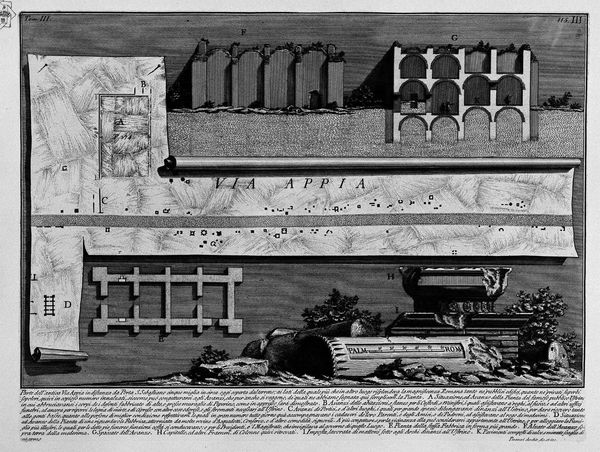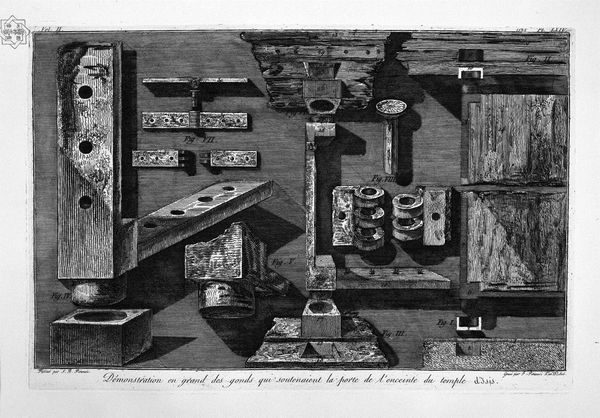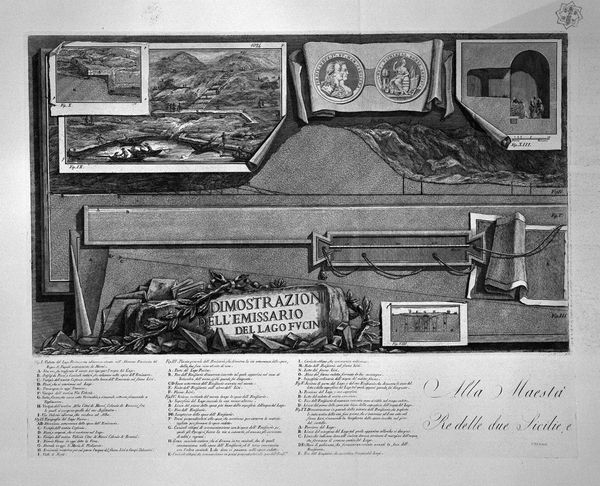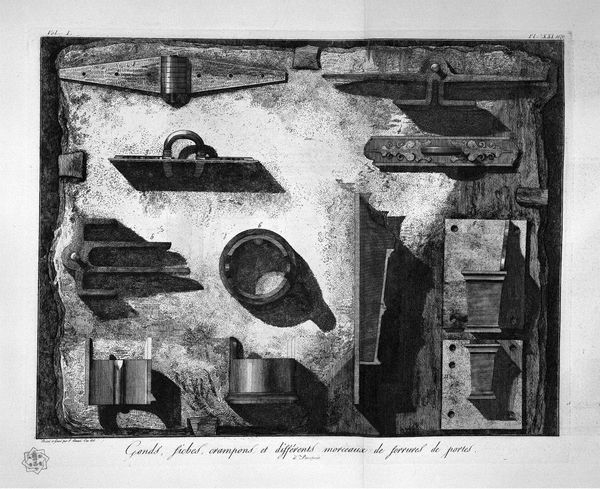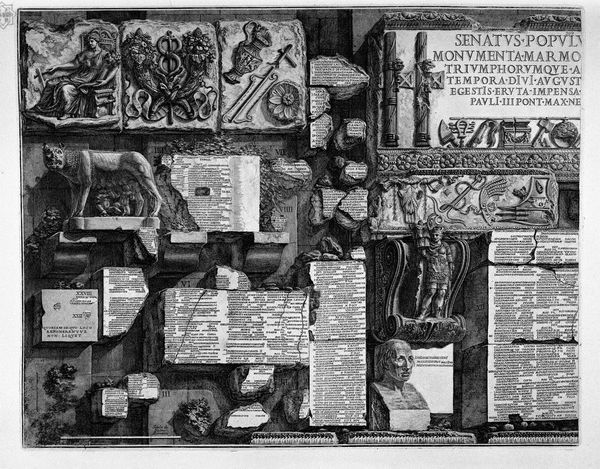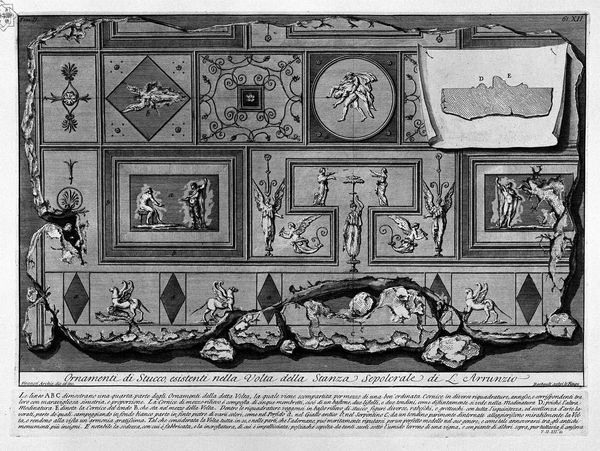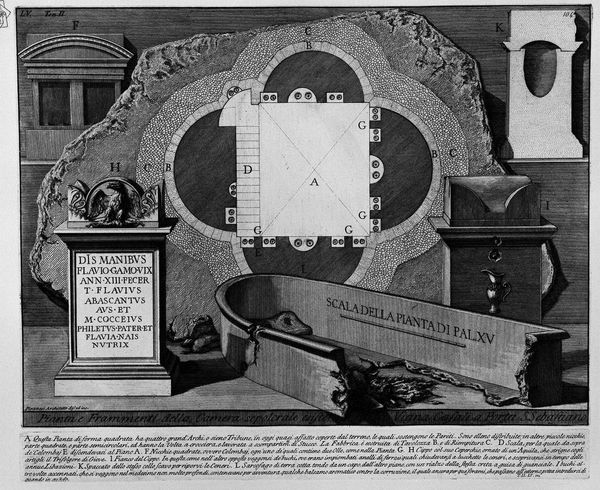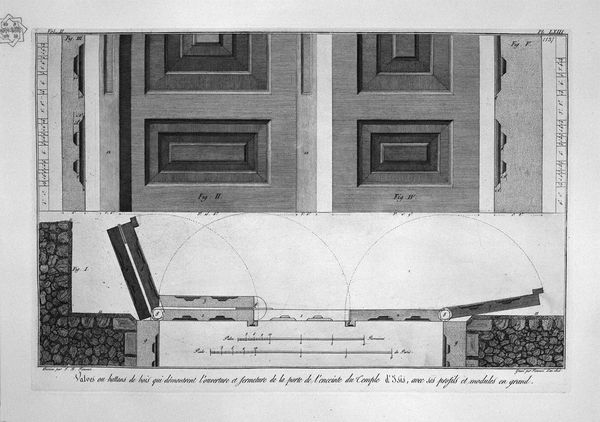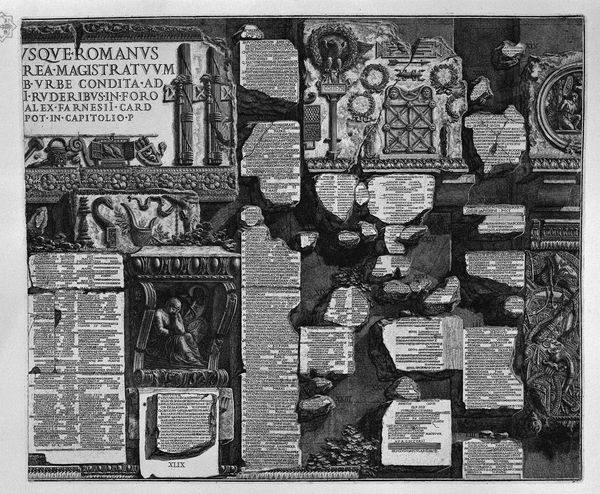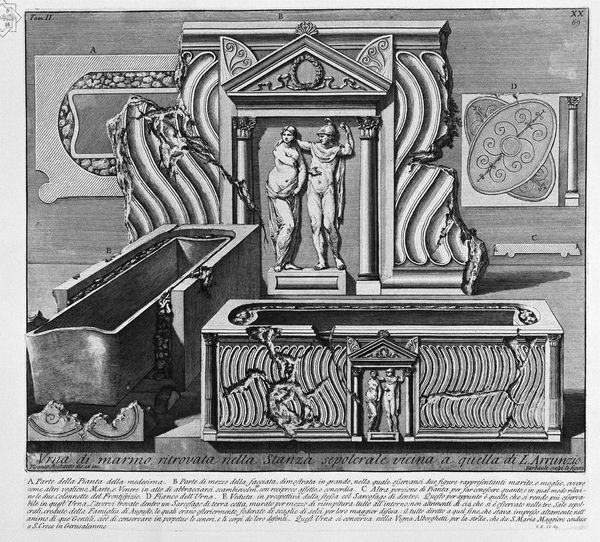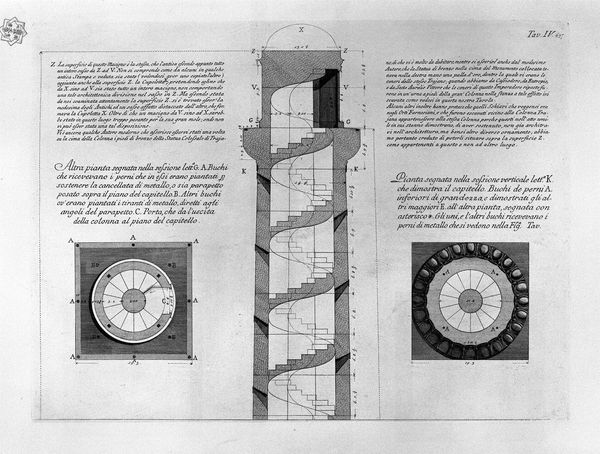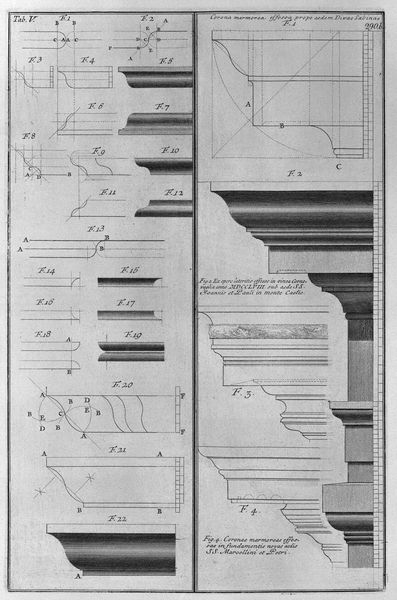
Demonstration from the Lake of Fucino, two boards together, title listed with index
0:00
0:00
drawing, print, engraving
#
drawing
# print
#
landscape
#
geometric
#
history-painting
#
engraving
Copyright: Public domain
Curator: This work by Giovanni Battista Piranesi is titled "Demonstration from the Lake of Fucino, two boards together, title listed with index." It’s a complex engraving, dense with information. What catches your eye initially? Editor: The sheer amount of detail is striking. It feels almost like an exploded diagram, but rendered with artistic flair. There's a cartographic quality to it, but then you have these romantic, almost theatrical scenes interspersed. Curator: Precisely! Piranesi wasn't merely illustrating a geographical undertaking; he was constructing a visual argument. He utilizes geometric precision but juxtaposes it with dramatic landscape views to evoke a sense of awe. The map elements provide data but, together with the romantic scenes, trigger an emotional understanding. Editor: So it's not just a technical drawing, but a political statement of sorts? An attempt to frame and monumentalize an engineering project. Who was its target audience? Curator: It could be considered a carefully crafted piece of propaganda. I'm especially intrigued by the eagle motif, the geometric forms. The symbolic elements contribute meaning related to governance and legacy. They likely targeted wealthy patrons or governing bodies, emphasizing the grandness and lasting impact of such projects on a region. It is all so calculated. Editor: And it certainly achieves that effect. Look how the different panels are arranged almost like a triptych, elevating its status beyond mere documentation. I wonder how prints like these were circulated and consumed? It’s not an easily digestible image, you need to work to understand it. Curator: Prints offered a relatively affordable medium to reach broader audiences. This was most likely initially created for patrons to see and presented at an exhibition before making it more accessible through printing to further build awareness and approval. Think of them as an early form of public relations, forging collective identity through spectacular imagery of shared history. Editor: It's fascinating to consider the interplay between engineering, artistry, and politics captured in this single sheet. Looking closely, I'm also thinking about who would have produced this kind of detailed drawing at the time. Was Piranesi also an engineer? Curator: That's right; his architectural background clearly influenced his perspective. Beyond simply celebrating infrastructure, Piranesi immortalized human endeavor. What an elaborate, multifaceted document from which we can unravel history! Editor: A testament to how art can serve as both record and rhetorical device, leaving us with questions long after the fact.
Comments
No comments
Be the first to comment and join the conversation on the ultimate creative platform.
